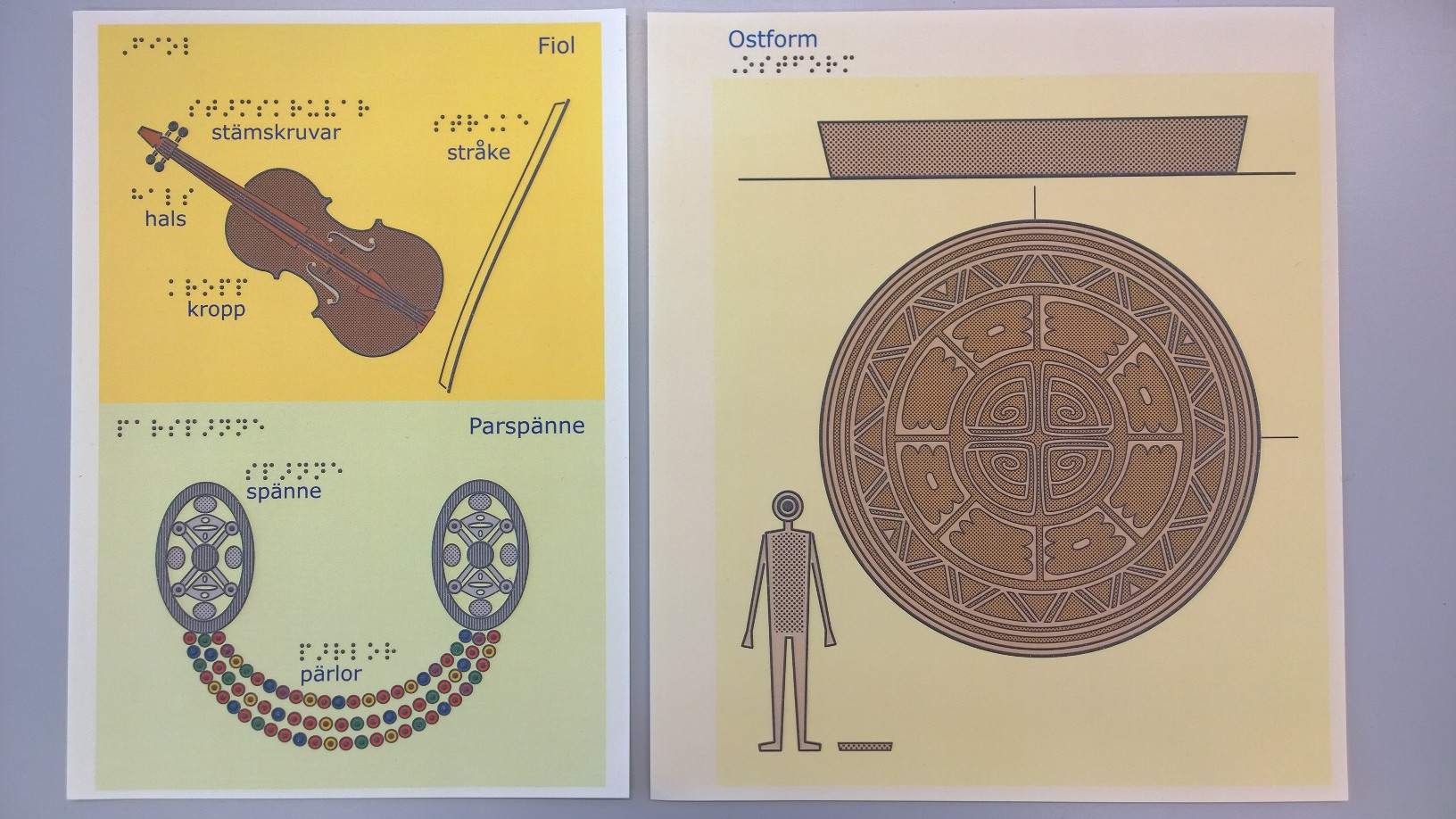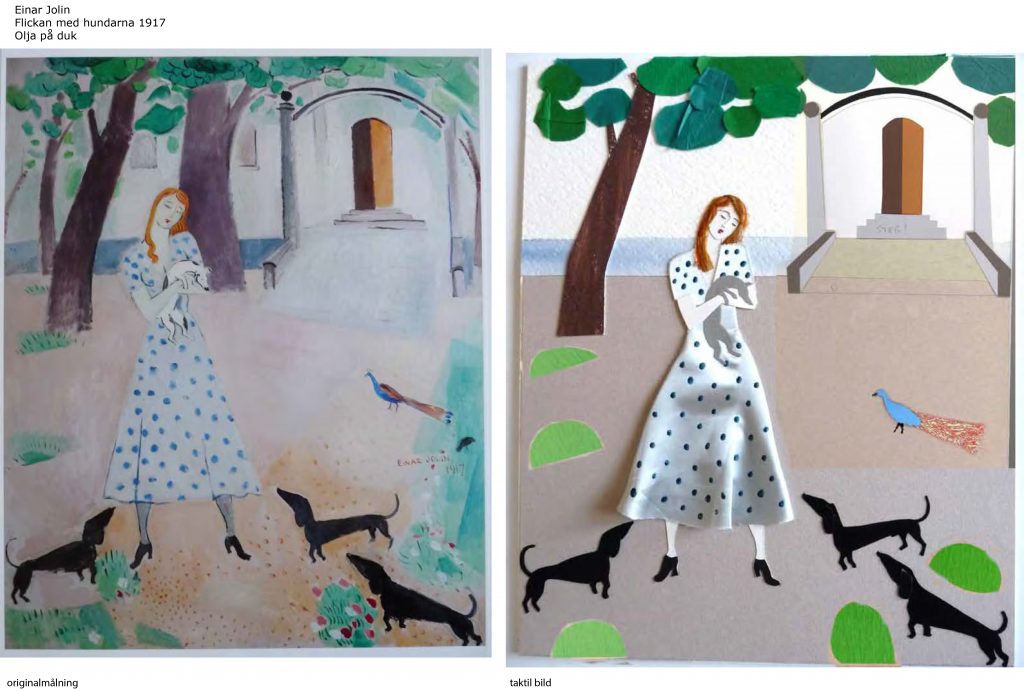8. Tactile images
Making two-dimensional images and photos tactilely accessible involves techniques such as swell-paper, collage pictures, and tactile photos. Tactile images should be produced by a designer with previous experience of the media in order to best utilise the opportunities afforded by the technique. It is also important to be clear about the information that is to be highlighted in the image.
Swell-paper images
Swell-paper images is a relatively cheap and simple way of producing tactile images. From a digital original, it is also easy to quickly print more copies if needed. They are also easy to handle and store. Swell-paper images are normally done in A4, or at most A3 size, and can therefore be kept in a binder or folder just like normal paper.
Swell-paper images are produced by thermosensible swell-paper in a special printer, and consists of raised lines and raster surfaces which can easily be read using your fingers. In addition to the black lines, dots, and other raster surfaces which appear as a raised relief in a swell-paper image, the images can be printed in colour (which does not become part of the relief).
As swell-paper images can be read both tactilely and visually, their use is not limited to being aids for persons with visual impairments. The technique can also be used as a supplementary information carrier for 3D models.

Swell-paper images can for example be used to:
- Show and clarify objects, buildings, etc.
- Show/highlight details on objects and buildings.
- Show/highlight patterns, decorations, ornamentations (e.g. meanders).
- Explain various mechanical or technical functions (e.g. levers).
- Compare/show the size of objects, buildings (e.g. the height of the Eiffel tower compared to the Great Pyramid of Giza).
- Combine braille and images into simple information graphics.
- Present maps and diagrams.

Collage pictures
Collage technique can be used to create a tactile interpretation of an illustration or work of art. You use different materials, where both the sensation and shape of the forms are important. Collage pictures should be supplemented with captions. See examples of collage pictures below.
Tactile photographs
Tactile photographs allow persons to experience photographs beyond pure information, and allows for interactions between persons with visual impairments and sighted persons. However, tactile photographs are always interpretations of photographs, not direct translations, and should just as all tactile images be supplemented with captions.
There are several techniques for creating tactile reliefs from photos. One technique for creating an image which is both tactile and visual, and where the original photo remains visible, is to mill the photo’s structures and contours in different layers of transparent plastic material. The plastic is then attached to a printout of the photo, which can be seen through the transparent layers of plastic.
Tactile photographs made using the above technique have long lives, are resistant to wear and tear, and are easy to clean. As it is an exclusive technique, you often choose to only interpret a few photos, for example, from a larger exhibition. This means that the selection of photos is very important. The tactile design is uniquely made based on each individual photo, in consultation between the customer and designer. It is important to be clear about the information that is to be highlighted in the image. If possible, the photographer should also be involved in the selection and in the production of captions for the photos.